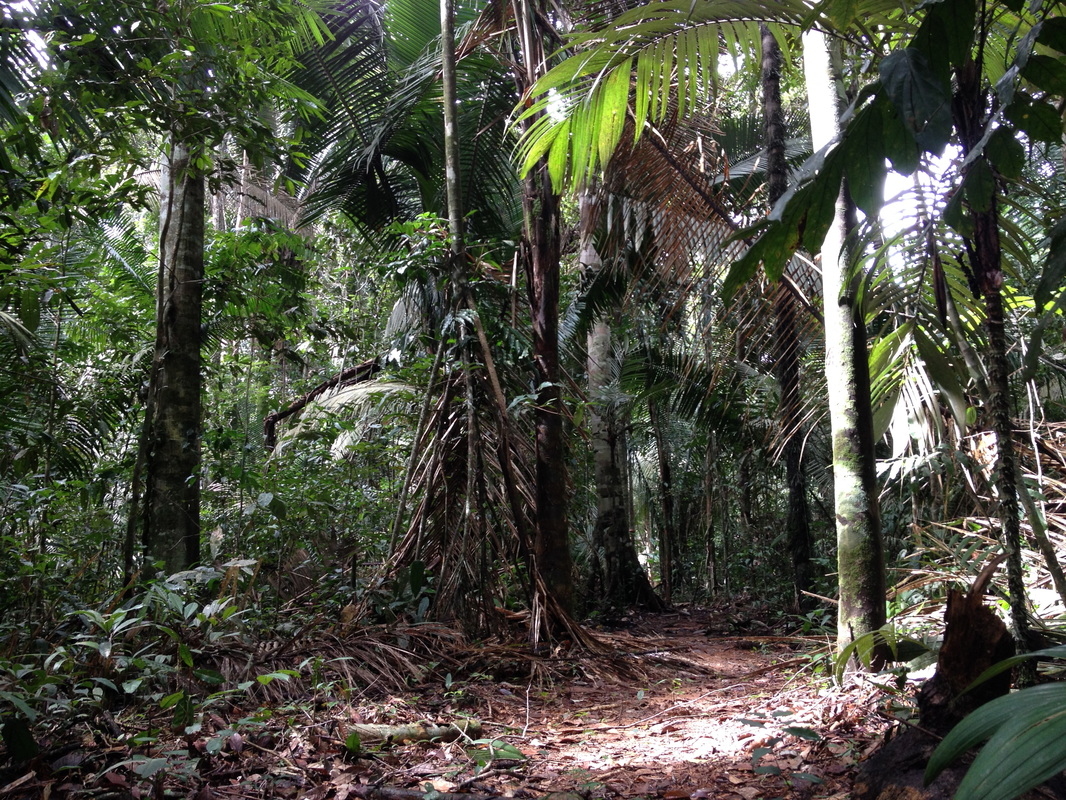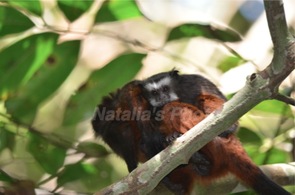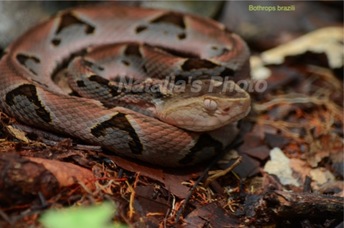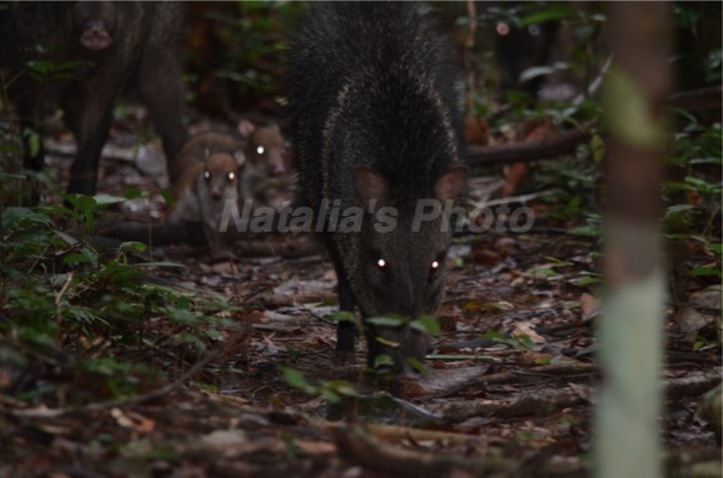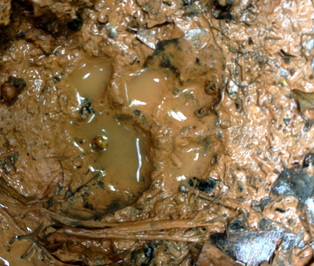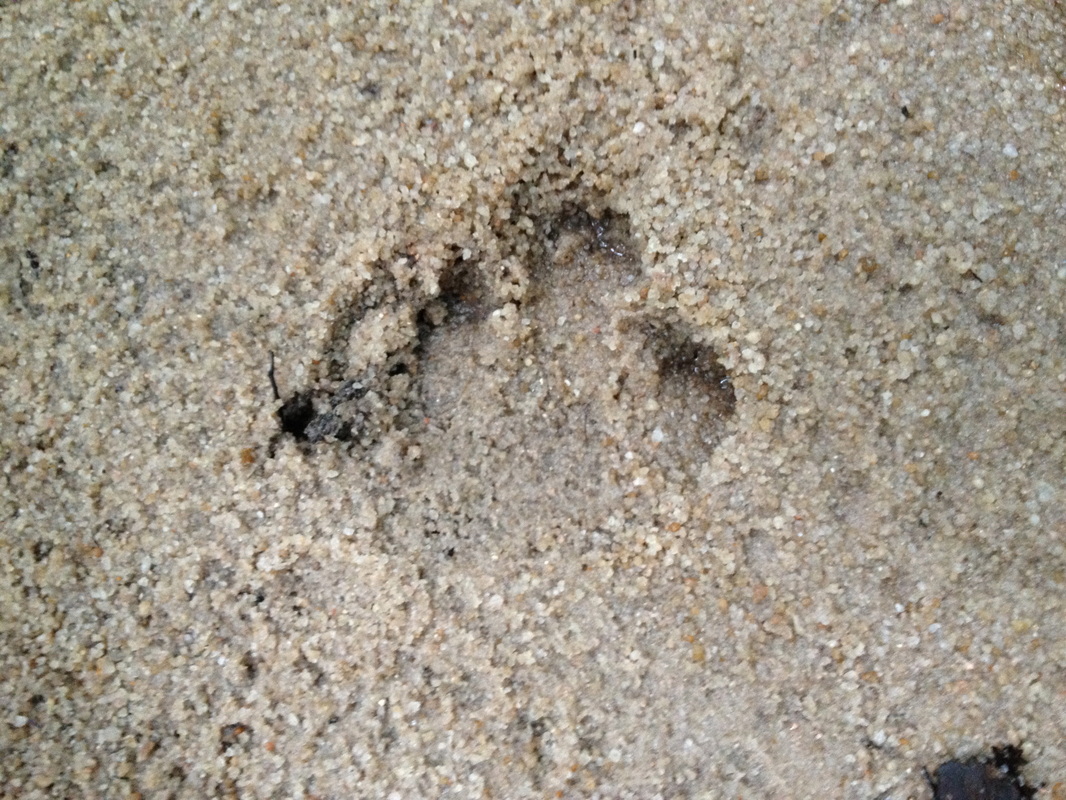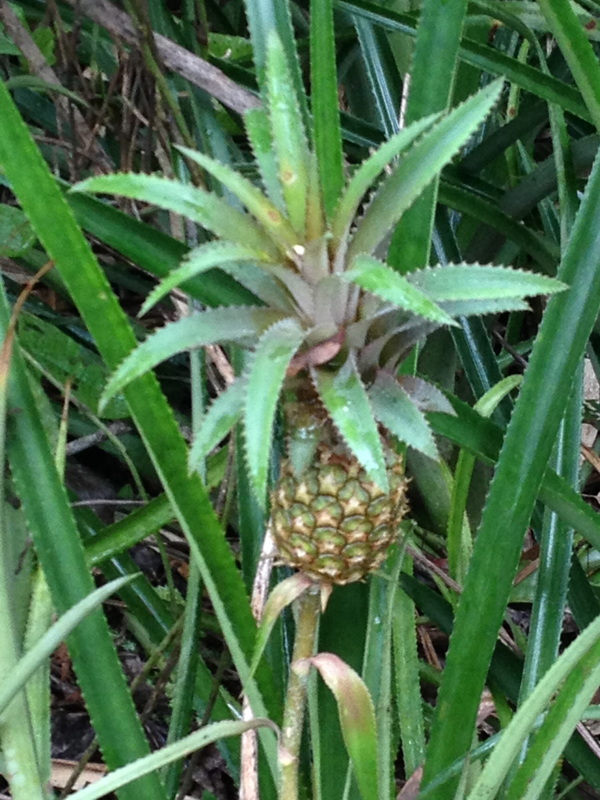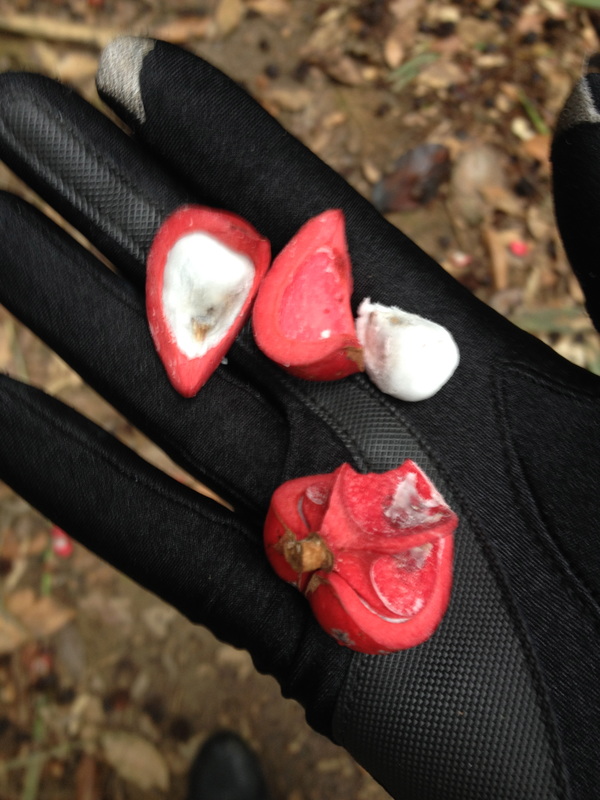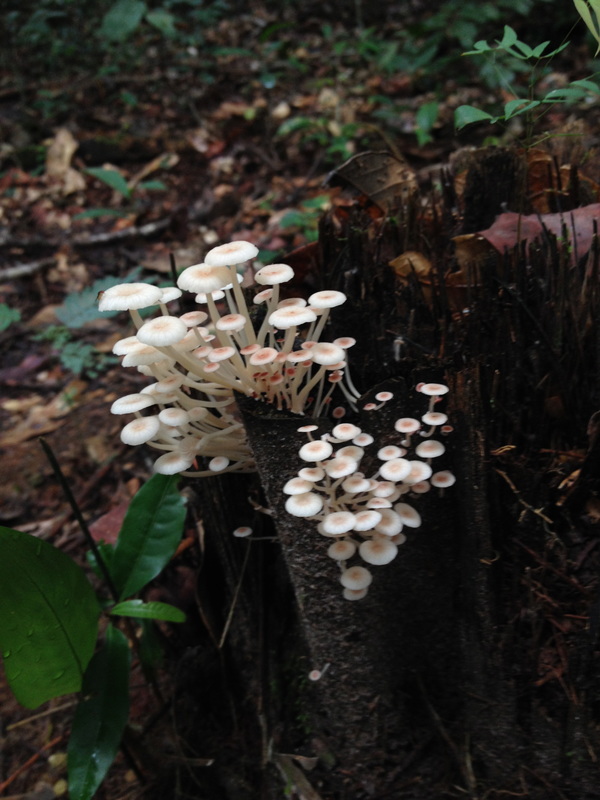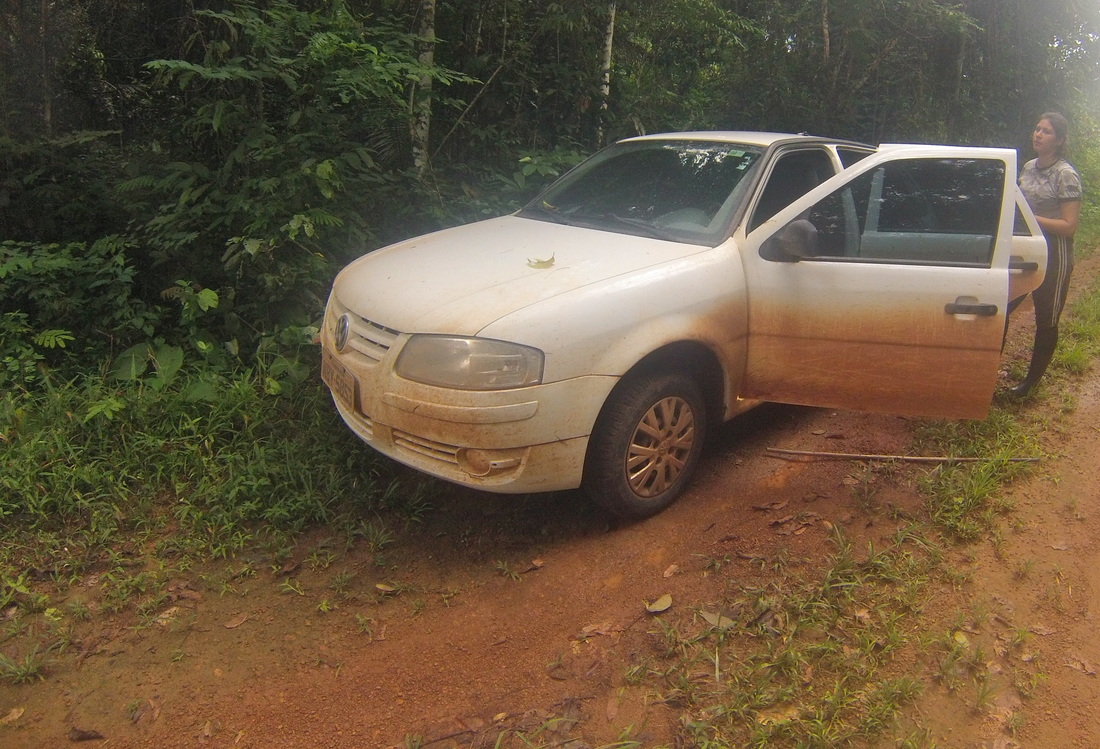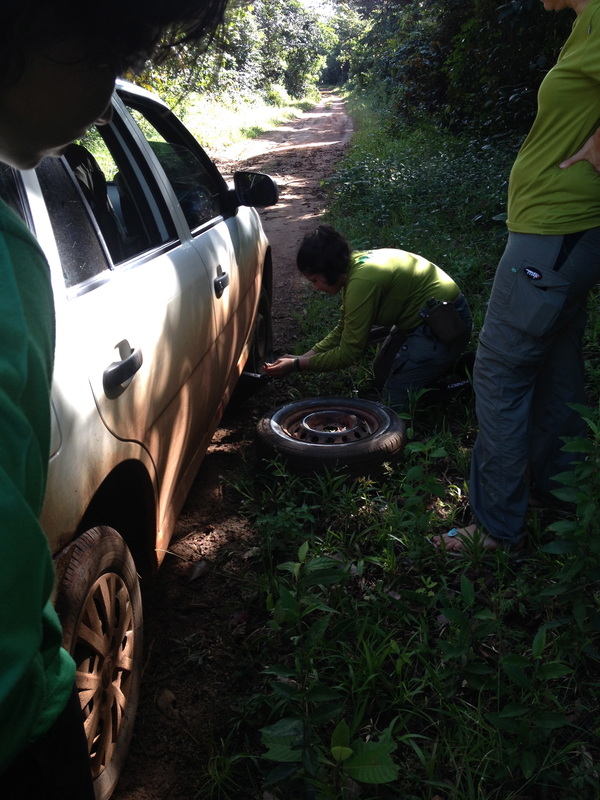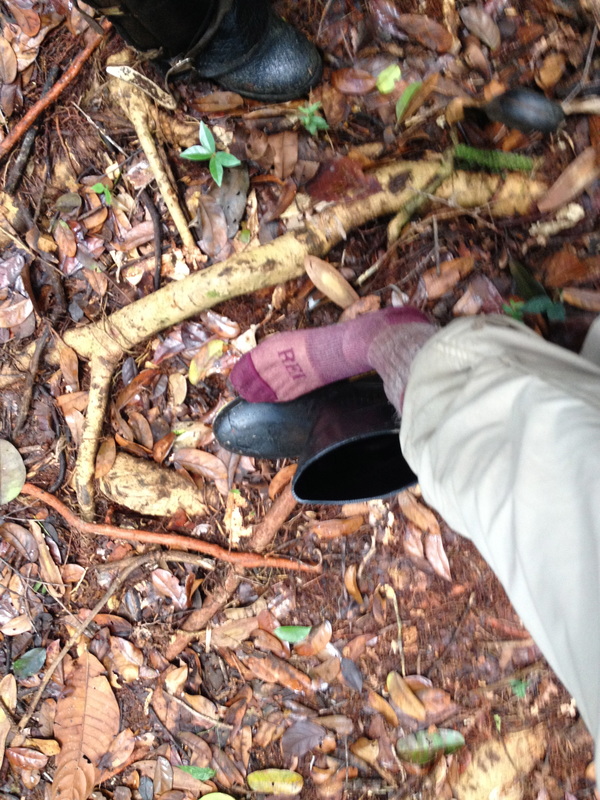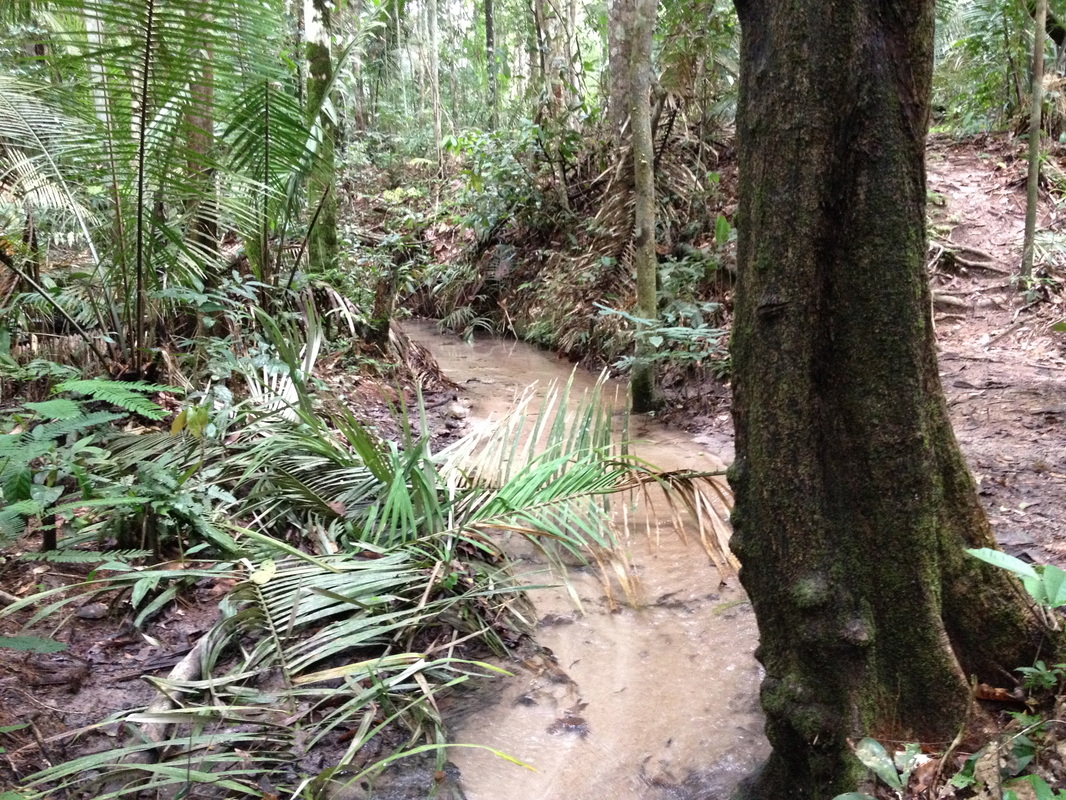|
I made three working trips into the Amazon forest in two different areas over the course of my Fulbright. The first forest region was in the state of Rondônia, an area called the FLONA do Jamari. I believe that stands for Floresta Nacional do Jamari (National Forest of the Jamari). The Jamari is a river tributary of the Rio Madeira which in turn feeds into the Amazon river. On this trip the goal was to assess the recovery of forest patches in areas that had once been the site of large mineral mining operations. We were conducting surveys of mammals of medium and large size in these forests that had been allowed to regrow. Remnants of the mines were still everywhere. Our job was to walk 12km of forest daily and record any animal sightings (or hearings), the number/size of the group, sex and age when possible, the distance from our trails, height above the ground, where they were spotted and to note any other interesting features of the animals. I saw some amazing creatures.
I often saw them in mixed groups with the Rondon's marmoset, Mico rondoni. This marmoset is much more shy than the similar sized tamarin and maintained much more distance from us, but was still visible and incredible to finally see. I had spent the last three years studying these and other members of the primate family Callitrichidae (marmosets and tamarins), and it was my first time seeing them in the wild!
This pit viper was curled up on the forest trail. The species is Bothrops brazili (Brazil's Lancehead). She was beautiful. And terrifying. But it is very rare to see these snakes, só don't let that stop you from visiting or working in forests! In fact, one student who studies them told me they were nearly impossible to find when people were actively looking for them! Lucky me :P We also saw two species of pecaris, animals that resemble wild pigs. The more “dangerous” species is a noisy animal that travels in large groups and are known locally as “queixada” (pronounced kay-shaw-da). I was told that they will run after researchers gnashing their teeth and biting. The only way to escape them is to climb up onto something high off the ground since they cannot themselves climb. My forest partner and I came across a particularly large group of queixada one day, which we hid out of sight from for fiften minutes until they all passed. After the experience we decided to play a trick on the other team and ran panicked to the car screaming that a group of queixada were after us. We were very convincing, perhaps inspired by the actual encounter, and they fell for it. Happily, I was never actually pursued by any forest animals.
She was by far one of the most exciting creatures I've ever seen in the wild. I was also pretty nervous to be staring into the face of such a powerful animal. But she simply looked at me and walked briskly away from me. I loved everything about that moment. Including that I had been alone when I saw her. We also spent time putting up camera traps. These cameras take pictures automatically when they sense movement. It was interesting to learn about the diverse strategies there are for placing these traps in the forest for monitoring purposes. Open areas surrounding water seemed to be a favorite spot for successfully capturing animal movement. Some models record short video in addition to taking photos which helps in behavioral studies.
The mosquitos started to come out so I started applying some repellent. I rested my right hand on the ground for a moment and felt something start to crawl over it. I reached down casually to brush it off thinking it was just another harmless bug and it turned out to be a Tucandeira (or Bullet) ant. This animal has one of the most painful stings in the animal kingdom. So much so that in the Sateré-Mawé tribe, they are used in a right of passage for young men. The young men stick their hands in mittens filled with the ants and withstand multiple bites from the ants, all the while showing no sign of experiencing pain (see the ritual here). Well...the ant bit me and I lost it. It was so painful I involuntarily shrieked and started crying. The bug repellent I'd just been using went squirting all over the road. And that was just one ant and one sting! Imagine the resolve of those young tribal members! My wrist was swollen and painful until the next day.
List of Mammal Species spotted with scientific names. Click the links to see Google images of these amazing animals to get a feel for what I saw in the forest! If you want the names of anything else, leave a comment.
Wedell's Saddle-backed Tamarin - Saguinus wedelli Rondon's marmoset - Mico rondoni Tufted Capuchin - Sapajus apella Peruvian Spider Monkey - Ateles chamek Titi Monkey - Callicebus spp. Saki Monkey - Pithecia spp. Collared Peccary - Pecari tajacu White-lipped Peccary - Tayassu pecari Collared Anteater - Tamandua tetradactyla Coati - Nasua nasua Puma - Puma concolor Jaguar - Panthera onca Brazilian Tapir - Tapirus terrestris
0 Comments
Leave a Reply. |
J.C. BucknerAssistant Professor, University of Texas at Arlington Archives
June 2020
Categories |
Illuminating the Diversification of Evolutionary Radiations
Adventure Log
stories of current and past fieldwork and explorations of nature.
Proudly powered by Weebly
